Rice Mill
Rice Grader Series
ANON rice grading machines are designed to quickly and efficiently process rice into premium-quality grains by automatically grading them according to different specifications and quality levels. Once the parameters are set, the machine completes the processing and grading with minimal manual intervention, making the operation simple and convenient. Our rice graders are suitable for a wide range of rice sizes and quality standards, offering multi-stage grading to meet the diverse needs of different customers.
Choose the right product for you
Providing quality products and services.
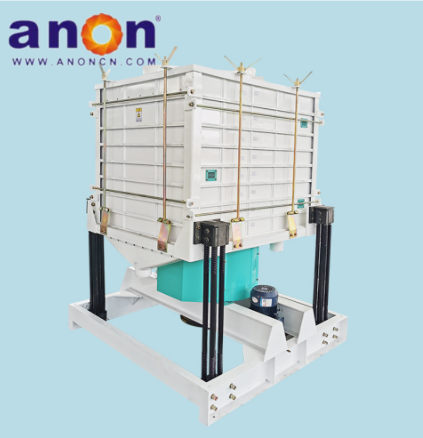
ANON MMPS Series Big White Rice Grader Machine
Product Description A new generation of high-efficiency and high-yield rice graders, it adopts several layer structures, good separation effects, and performance. Sieve mesh is made of steel wire, it can…
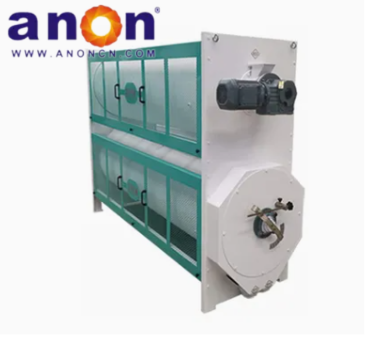
ANON Rice Mill Machine Mjxt Rice Length Grading Machine
Product Description MJXT Series Length Grader is suitable for rice processing plants. It is grading equipment used to separate the whole rice from the broken rice. It can…
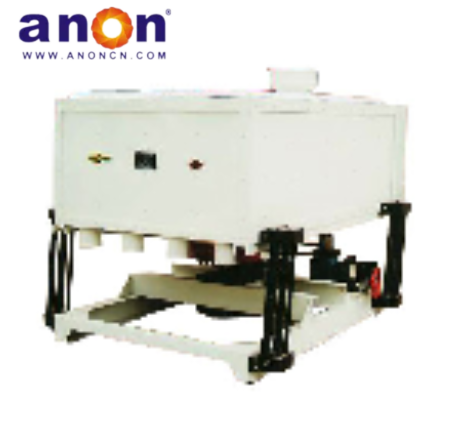
ANON MJP Series Automatic Compact Rice Grader Machine
Product Description MJP-type horizontal rotating rice classifying sieves are mainly used for classifying rice in rice processing. It uses the difference between the broken rice and the whole rice type…
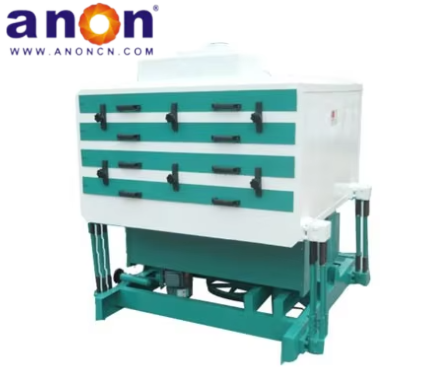
ANON MMJP series 4-layer white rice grader machine
Production description MMJP series rice grader is the traditional grading machine used for separating rice into different grades, such as full rice, big broken rice, and small broken rice….
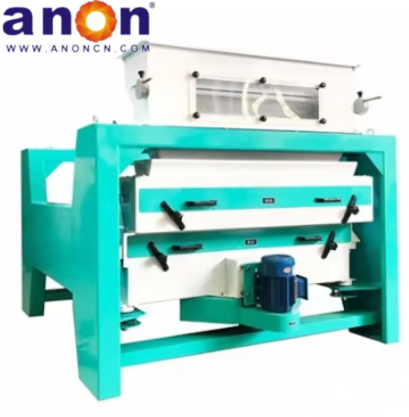
ANON MMJM125x3 3-layer Rotary Rice Grader Grading Machine
Product Description The MMJM series white rice grading rotary screen is used to classify white rice, and can also be used to classify other particles by particle size. When the…
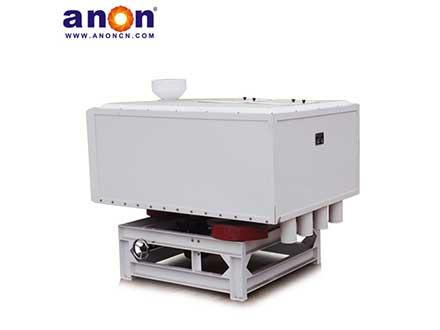
ANON MMJP Rice Grader,Rice Grading Machine
The rice grading machine can quickly and accurately grade rice according to characteristics such as size, shape, and color. ANON MMJP series White Rice Grader Specification ANON Our Services
Introduction
Rice grading machines classify rice by size, shape, and quality to ensure the final product meets strict quality standards. They typically combine sieving, gravity separation, and vibration separation to achieve an efficient and accurate grading process.
ANON offers a variety of white rice grading machines to suit different processing needs. In addition to the commonly used models that grade rice with multi-layer sieves (with sieve holes decreasing in size from top to bottom) combined with machine vibration—such as the MJP Series and MMPS Series—we also provide:
-
MJXT Series Length Grader
As the name suggests, it grades rice precisely by length. Using a rotating drum with specially shaped indentations, it separates head rice or broken rice from whole grains based on length differences, making it highly suitable for rice mills. -
HS Series Thickness Grader
This model grades rice by thickness, effectively removing flat or incomplete grains. The result is high-quality rice with uniform thickness and improved plumpness. -
MMJM Series Rotary Grader
A rotary rice grader that separates grains into different categories through three motion paths at the feed inlet, sieve plates, and discharge outlet. It can also be used to grade other similar granular products. -
MJP Series White Rice Grader
Designed for grading rice of different sizes, featuring a compact structure and advanced grading technology. -
MMPS Series White Rice Grader
Built for high-capacity grading with large sieve areas and multiple layers, making it ideal for handling large-scale rice processing.
Rice Grading Machine Features:
ANON White Rice Grading Machine – Efficient Whole & Broken Rice Separation to Enhance Your Rice Quality and Value!
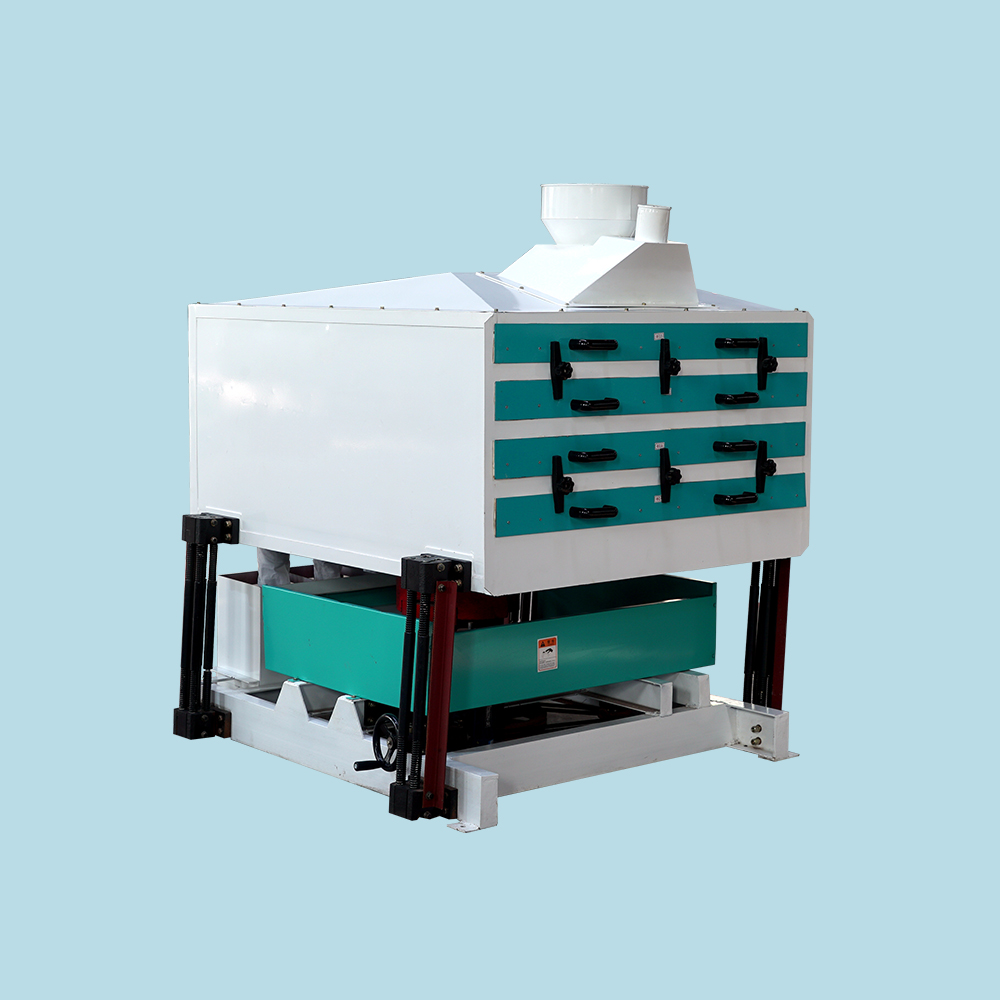
1. High Grading Precision
The ANON rice grader delivers highly accurate separation, ensuring clear control over whole grain and broken rice ratios to meet different market and customer requirements.
Our graders are equipped with multiple sieve layers and adjustable sieve apertures, with each layer corresponding to a specific grain size. This guarantees precise grading into whole rice, large broken rice, medium broken rice, and small broken rice for further processing.
The vibration mechanism ensures that rice rolls evenly across the sieves for quick stratification, while carefully controlled vibration intensity prevents whole rice and broken rice from mixing.
With a grading accuracy of over 98%, ANON machines significantly outperform manual sorting, producing rice with uniform grain size and consistent appearance—helping you deliver premium-quality rice that stands out in the market.
2. High Processing Efficiency
The ANON rice grading machine is designed with a large feeding inlet, a wide screening surface, and a fast discharge system to ensure high throughput. Once the sieve size and other parameters are set, the machine automatically grades rice into whole grains, large broken rice, medium broken rice, and small broken rice under vibration. Each sieve layer has its own discharge channel, directing rice of different grades into their respective bins automatically—no manual intervention required.
The rice grader can be seamlessly integrated into a production line, working in combination with upstream rice whitening machines and downstream color sorters or polishers. This enables continuous, uninterrupted processing while minimizing losses between stages, ultimately boosting overall production efficiency.
3. Strong Adaptability
The ANON rice grading machine is adaptable to different rice varieties, from long-grain Indica rice to short-grain Japonica rice and even specialty varieties. With easy-to-change sieve plates of different apertures, operators can quickly switch between rice types without dismantling the entire machine—perfect for multi-variety or small-batch processing.
Our grader also offers adjustable grading levels to suit different market demands. By removing broken grains and imperfect kernels, it can upgrade ordinary rice into premium-quality rice, significantly increasing product value and competitiveness.
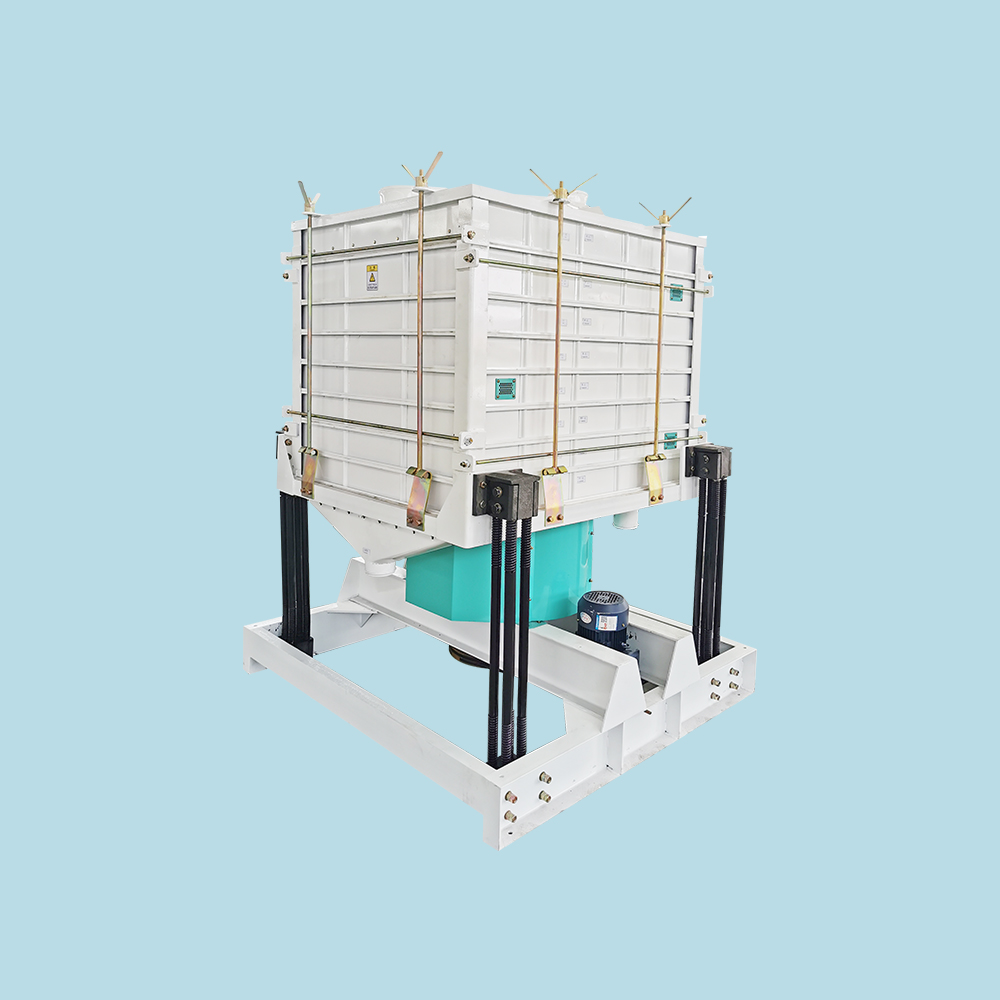
4. Stable Operation
The ANON white rice grader features a compact structure and well-engineered design that ensures stable performance. The feeding system delivers rice evenly onto the grading screens, preventing overloading that could cause excessive vibration. Scientifically arranged sieve sizes and layers distribute the workload step by step, ensuring smooth grading without bottlenecks or blockages. Multiple balance points and vibration-damping components minimize shaking caused by uneven loads. The machine’s robust construction, heavy-duty frame, and precisely manufactured sieve frames guarantee smooth, steady operation with minimal deviation.
5. Easy Maintenance
Built with durable stainless steel, the rice grader is wear-resistant, long-lasting, and compliant with food processing hygiene standards. The sieves are fully detachable for cleaning, preventing bran residue buildup that could cause mold or cross-contamination. Replacing sieves is simple and efficient—just open the side door, remove the old sieve frame, and insert the new one in three quick steps—reducing downtime and boosting productivity. The enclosed body design minimizes dust accumulation, while the self-cleaning system prevents blockages during processing, enabling reliable 24-hour continuous operation.
6. Maximizing Resource Utilization
“At ANON, we believe there is no such thing as waste—only resources in the wrong place.”
Our rice grader uses multi-layer sieves with different mesh sizes to separate whole rice, large broken rice, medium broken rice, and small broken rice. Each grade can be repurposed: large broken rice is ideal for rice flour, rice wine, beer, or instant porridge; small broken rice and bran fragments are excellent raw materials for baby food, pet feed, or starch syrup. These valuable by-products can be sold separately, creating extra revenue and ensuring maximum utilization of every grain.
Conclusion
ANON manufactures agricultural equipment using premium materials and components to guarantee stable performance, long service life, and easy maintenance. Its flexible structural design allows for quick replacement of parts, making it simple to adapt to different sizes and quality grades. Choose our rice grader to increase efficiency, maximize profitability, and secure long-term success in the rice processing industry.
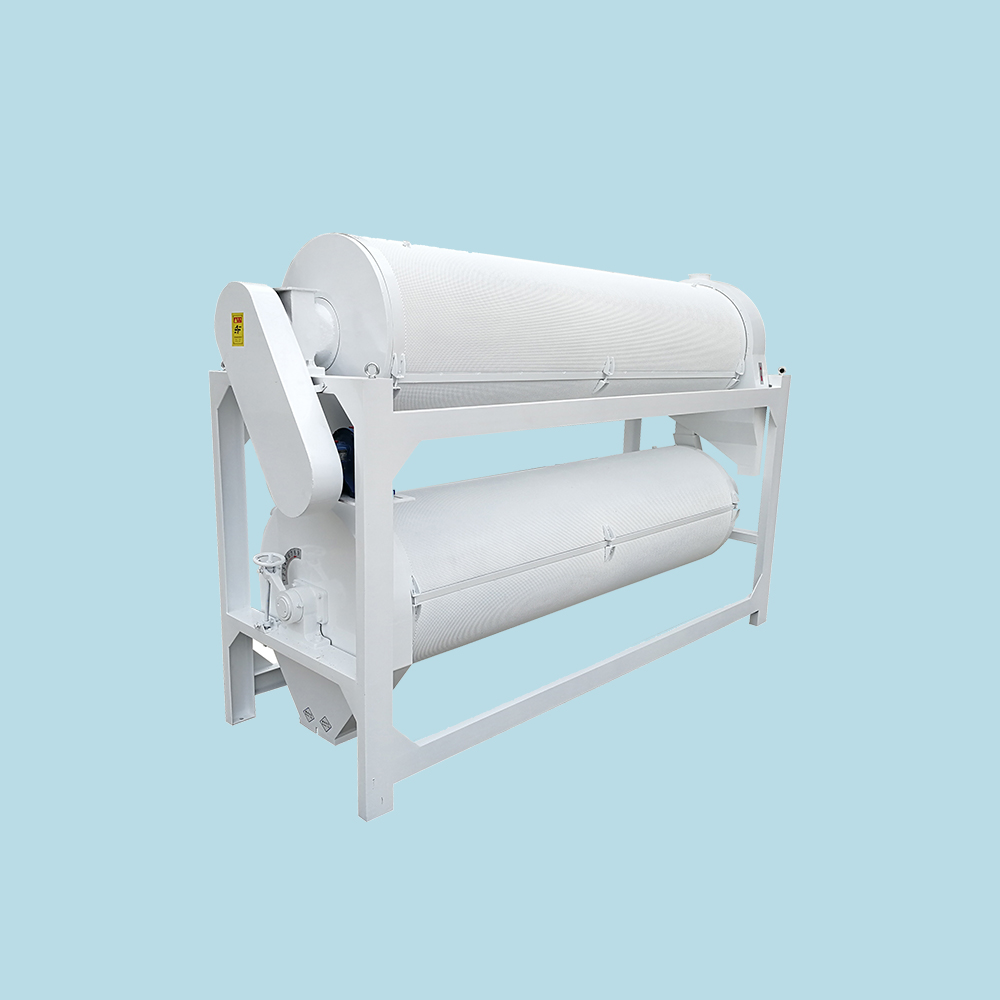
FAQ
What are the industrial applications of rice grading machines?
Its function is to grade finished rice and extract broken rice that exceeds the requirements. Its performance directly affects the purity of finished rice and is the main instrument for determining the content of broken rice. Therefore, rice sorting machines are essential equipment for rice mills.
Can a brown rice grader be used for brown rice, or is it only for white rice?
Most brown rice graders can be used for both brown and white rice, but there are two things to keep in mind.
Required Equipment Parameters: Brown rice has a harder hull and a rougher surface, so the grader’s speed, mesh gap, or feed rate may need to be adjusted to avoid clogging or inaccurate grading.
Some specialized models require adjustments: If your production line only processes brown rice, you can choose a brown rice grader to avoid wear and tear on equipment components caused by brown rice hulls. If you process both brown and white rice, it’s best to choose a general-purpose model with adjustable parameters.
Why is the classifier vibrating excessively during operation? How can this be addressed?
Excessive vibration during classifier operation is typically caused by issues with equipment placement, component installation, the drive system, or material distribution. These issues require specific solutions. If the machine is not level due to a tilted frame, use a spirit level and adjust the anchor bolts to level the machine. If the screen or drum is not securely installed (e.g., loose mounting bolts), shut down the machine and tighten the bolts one by one, paying attention to even tightening to prevent deformation of the screen. If the drive system is unbalanced (e.g., uneven belt wear or motor shaft misalignment), replace the worn belt and calibrate the coaxiality of the motor and drum shafts (ensuring a deviation of ≤0.1mm). If the feed port is tilted to one side, causing uneven material distribution, adjust the feed leveling device (e.g., the angle of the guide vane) to ensure even distribution of the material on the screen or drum. This will alleviate vibration and prevent degradation of grading accuracy and damage to equipment components.
How do you grade rice?
CNS level: According to the Chinese National Standard (CNS), white rice is divided into three levels based on its appearance quality. The first-grade rice has the least amount of damaged grains, broken grains, impurities, and other defects, indicating that its appearance quality is the highest.
What could be the problem if there’s still a large amount of broken rice in the rice?
If the grading parameters are inappropriate, such as the drum speed being too high, resulting in a short rice retention time and inadequate separation, or if the screen mesh is too large, causing broken rice to be discharged along with the whole rice, you should reduce the speed or replace the screen with a smaller size. If the equipment is overloaded with too much material, causing material to accumulate in the grading area and prevent separation, you should reduce the feed rate to ensure that the equipment meets its rated processing capacity. If the cleaning device is malfunctioning, such as a worn brush or clogged screen mesh, preventing broken rice from falling to the lower layer, you should inspect and replace the worn brushes or clean the clogged screen mesh. If equipment parts are worn, you should replace the worn drum or recalibrate the gap.
Contact for detailed service
Anon cooperates with a number of factories to improve efficiency and service quality, and provide technical support and services to customers.
Get Support